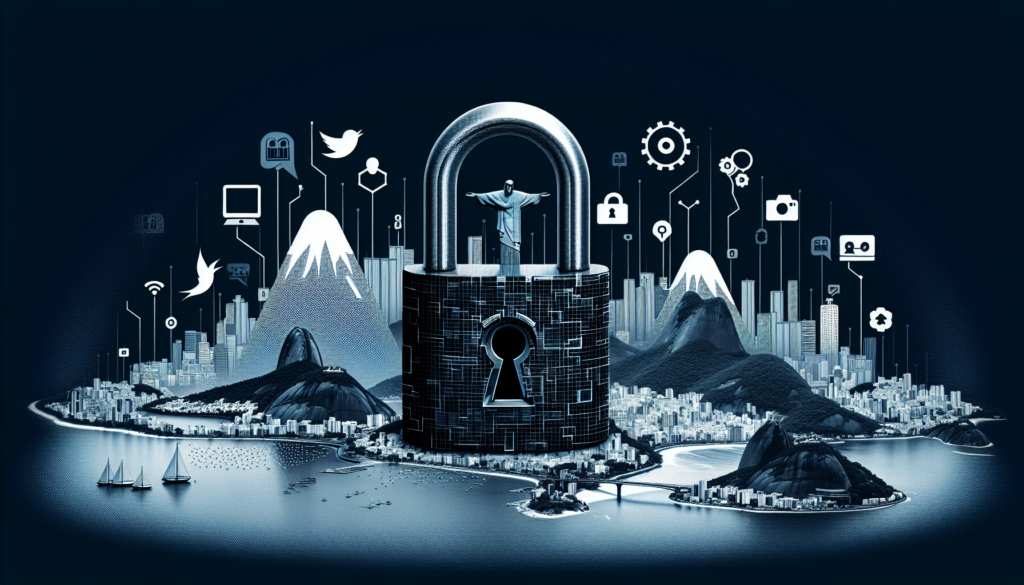The Suspension of Twitter in Brazil: A Turning Point for Digital Platforms
In a world where social media has become an essential part of communication, the sudden suspension of Twitter in Brazil has sent shockwaves through both users and businesses alike. This unprecedented move, triggered by the platform’s non-compliance with local regulations, has opened a new chapter in the ongoing tension between digital platforms and government oversight. While this event is specific to Brazil, the implications stretch far beyond its borders, signaling a critical moment for social media platforms globally.

What Happened in Brazil?
The suspension stems from Brazil’s recent push for tighter regulations on digital platforms, particularly in the areas of misinformation, hate speech, and content moderation. Twitter, once a freewheeling space for public discourse, found itself in conflict with the country’s evolving regulatory framework. Despite being one of the most popular social media networks in Brazil, the platform’s failure to adhere to these new rules has led to its temporary suspension.
This is not the first time a social media platform has clashed with national governments, but Twitter’s suspension in Brazil highlights a growing trend. As more countries enact stricter laws governing online spaces, companies that fail to comply face serious consequences. This incident serves as a wake-up call to platforms and users alike.
A Global Shift in Social Media Regulation
Brazil’s move is part of a larger global shift. From the European Union’s Digital Services Act to India’s new IT regulations, governments around the world are tightening their grip on digital platforms. While these laws aim to create safer online spaces, they also introduce a new layer of complexity for platform operators and digital professionals who rely heavily on social media for audience engagement.
For businesses, this development raises an important question: how much should we rely on third-party platforms for audience interaction? The suspension of Twitter in Brazil shows that no platform is immune to government regulation, and relying solely on these channels is becoming increasingly risky.
The Risk of Overreliance on Third-Party Platforms
Digital marketers, content creators, and businesses across the globe have traditionally leaned on social media platforms like Twitter, Facebook, and Instagram to engage with their audiences. These platforms have made it easy to build followings and reach millions of users with just a few clicks. However, when regulatory issues or platform-specific problems arise, those who are overly dependent on these channels can face devastating consequences.
The suspension of Twitter in Brazil is a stark reminder that businesses should not place all their eggs in one basket. Building communities on third-party platforms is convenient, but it also means giving up control over how and when you can reach your audience. If a platform faces restrictions, gets suspended, or changes its policies, businesses that rely heavily on these channels could lose significant engagement.
Building Independent Communities: The Need for Diversification
To mitigate the risks associated with overreliance on platforms like Twitter, digital professionals must prioritize diversification. While social media is a vital component of modern digital strategy, it should not be the only channel used for audience engagement. Investing in platforms you own and control, such as email lists, websites, and private communities, is key to ensuring long-term stability.
When you control the platform, you control the conversation. By building your own communities, you’re not subject to the whims of a changing regulatory landscape or a platform’s business decisions. This doesn’t mean you should abandon social media altogether; instead, view it as a piece of a larger strategy. The best approach is to use social platforms to drive traffic and engagement back to your owned properties.

A New Era for Digital Strategy
The suspension of Twitter in Brazil serves as a turning point, urging digital professionals to rethink their strategies. As governments continue to impose stricter regulations on digital platforms, businesses must adopt more resilient, diverse strategies that safeguard their audience engagement.
In this new era, owning the platform where you interact with your audience is critical. By combining social media presence with strong, independent communities, businesses can navigate these turbulent waters with more security and control. As digital regulations evolve, those who prepare now will be in the best position to thrive, no matter what comes next.

